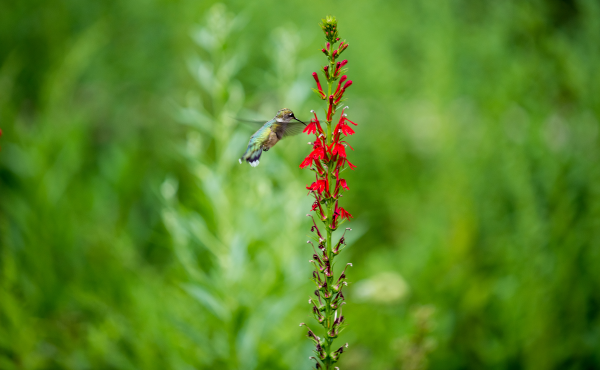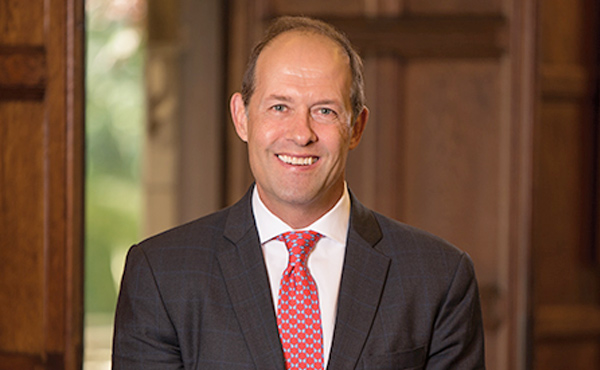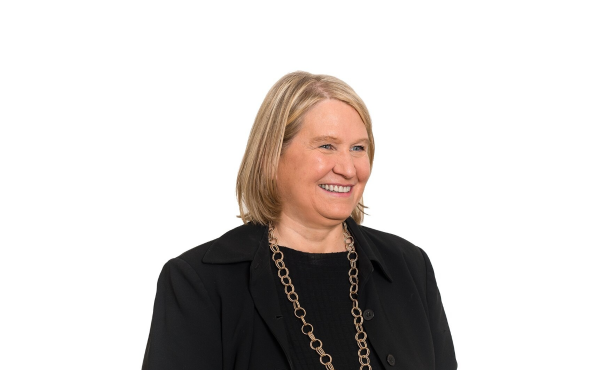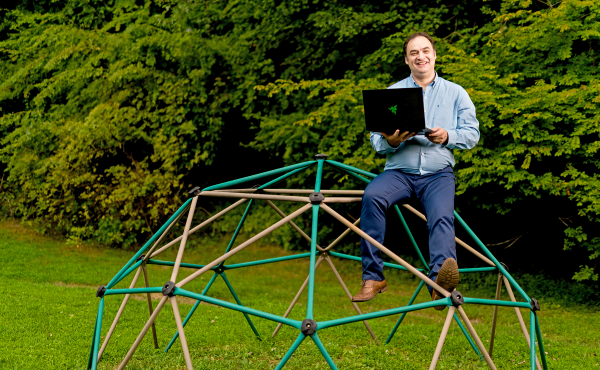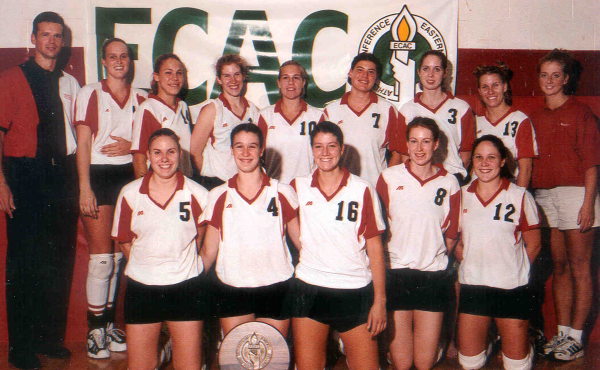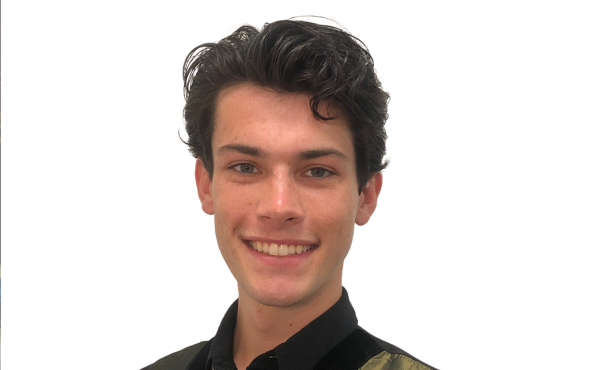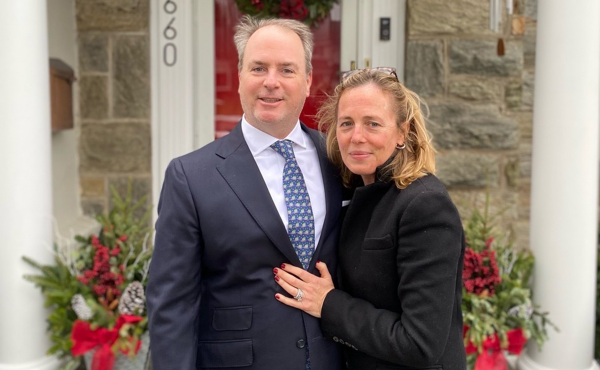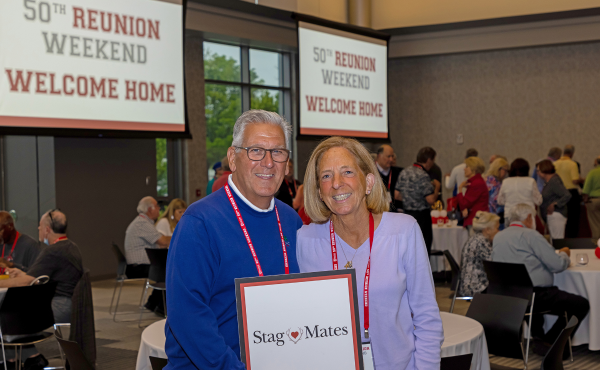Fairfield's Dr. John E.Klimas Jr. '53, an expert on wildflowers, was a voice for conservation ahead of his time.
To ensure that wild flowers will always be a part of man’s natural environment, ‘take nothing but pictures, leave nothing but your footsteps’.
— Dr. John E. Klimas Jr., in his Introduction to Wild Flowers of Connecticut
In 1958, the average cost of a house was just over $12,000, the “hula hoop” had just be come a national craze, the curvy fenders of Ford thunderbirds flashed past street corners, and Fairfield University was a scrappy school with only a few buildings on its sprawling New England acreage.
It was the year John E. Klimas Jr. ’53, PhD came back to teach as an instructor of biology on campus. Just a few years prior, the local Ansonia, Connecticut boy had been an undergraduate student at Fairfield, a biology major and associate yearbook editor, who went on to earn a master’s degree in biology from Boston College, and a doctorate in physiology from the State University of Iowa.
Dr. Klimas was an authority on conservation, ecology, biology, and environmental education — with a particular focus on wildflowers.
So many Fairfield professors leave a lasting impression on their students, informing their lives and shaping their futures, and Dr. Klimas – who died unexpectedly in 1975 at the age of 48 – is one of those. He was also a conservationist before that was a concern we all shared, something of a lonely voice calling on his students to take care of the natural world. Today, his passion for biology is remembered by his former students, and is evident in the books he wrote on the wildflowers around us, as enlightening and valuable today as they were when they were written, beautiful volumes with drawings or colorful plates, objects of delicate beauty in their own right.
A great number of Fairfield alumni remember Dr. Klimas’ kindly manner, his warmth as a teacher and person, but also how he was a man ahead of his time.
“Nobody was talking about ecology [then],” recalled alumnus Harry Rissetto ’65, a biology major, who was under Dr. Klimas’ tutelage for a zoology course. “He was a serious teacher with a real interest in the environment.”
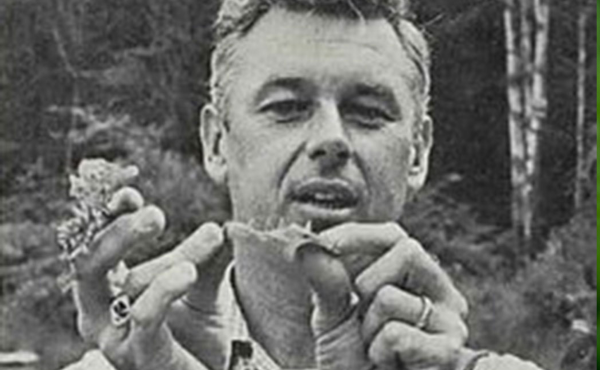
John E. Klimas Jr.’53, PhD, out in the field
During Dr. Klimas’ career at Fairfield, he focused on environmental awareness and published seven books on native wildflowers. After his death, alumni and friends established a fund in Klimas’ name, which still exists today, to support faculty research.
He was a pioneer who paved the way — with involvement from other Fairfield faculty legends in biology and other departments — for the focus on sustainability at Fairfield that remains fundamental to the University today.
James D. Fitzpatrick ’70, MA’72, P’08, a former Fairfield administrator for more than fifty years, recollected that Dr. Klimas spearheaded the University’s first Earth Day demonstrations in 1970.
“He was very influential in bringing awareness of the environment and getting students involved,” Fitzpatrick said.
Another alumnus, Pat Kiley ’71, a biology major who had a more than four-decade career in the health insurance industry, credits Dr. Klimas for teaching him how to “think through a problem” with a careful discipline that has “served him well” both in life and vocation.
According to The Manor 1970 yearbook, Dr. Klimas and others held an environmental “teach-in” in April of that year. A sepia photo in the yearbook shows a bearded Dr. Klimas helping a student fasten a paper poster to a tree. The pair stand around the tree’s knotty roots, a Volkswagen beetle parked behind them, with a heap of rubble and trash — motoroil and soda cans, old baseball bats, empty bottles — at their feet. There must have been a ferocious gust of icy early spring wind as Dr. Klimas’ hair is standing on end, his jacket collar and lapel raised. The handwritten lettering boldly scrawled across the top of the poster reads “Challenge Pollution.”
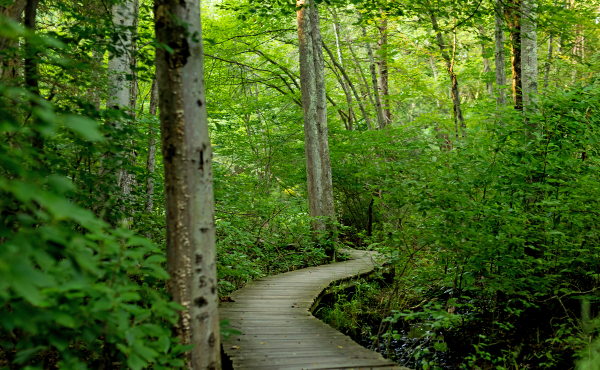
A wooded path at the Roy and Margot Larsen Audubon Sanctuary in Fairfield, Conn. where the flowers studied in Dr. Klimas’ field guide were photographe
At Fairfield, Dr. Klimas taught a number of different courses in the biology department, but it was botany — wildflowers in particular — where his name was made in the field.
In 1968, Dr. Klimas wrote Wild Flowers of Connecticut and subsequently published Wild Flowers of Eastern America, which was chosen by the American Library Association as one of the outstanding reference books published in 1974. He also co-authored Life: A Question of Survival, a textbook geared at middle and high school-aged students that was funded by a National Science Foundation grant.
He authored five additional books on wildflowers native to the states of Pennsylvania, New Jersey, New York, Massachusetts, and one combining those native to Vermont and New Hampshire. Additionally, the Fairfield professor was preparing pocket field guides to the flowers native to the various mid-Atlantic states at the time of his death.
Wild Flowers of Connecticut is a small book — still cited today as a comprehensive guide of native wildflowers — meant for taking in a pack out on a trail. Bound in full lime-green cloth, imperial unit ruler stamped in gold on the front cover (for measuring specimens), the jacket boasts a full-color image of a crimson cardinal flower.
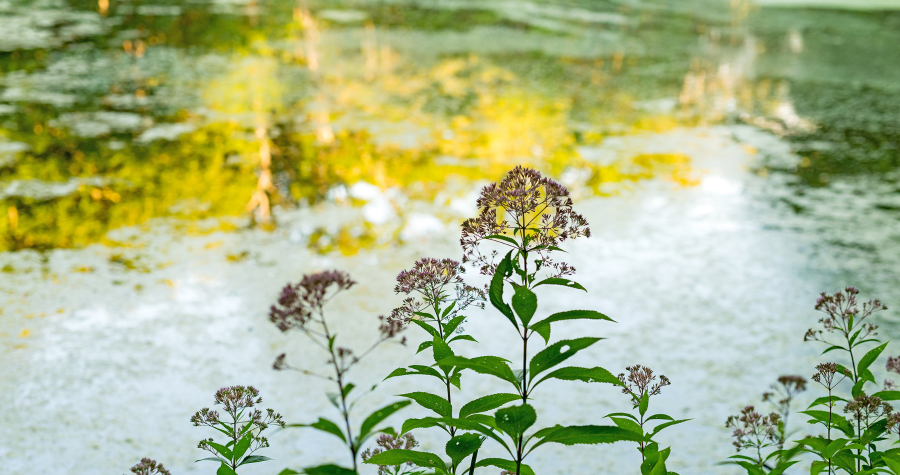
Purple Joe-Pye weed (Eupatorium masculatum) growing near a pond’s edge at the Audubon.
In this pocket guide that includes a midsection of color photographs, Dr. Klimas describes the plant as a “striking flower of the late summer” that possesses “spikelike clusters of brilliant red flowers” which he likens to the “red finery of the cardinals of the Roman Church.”
“I’m in the shadow of that cardinal flower,” said John Anthony Klimas ’77, Dr. Klimas’ son and an English major at Fairfield at the time of his father’s passing. “I used to go out with him in the woods as a boy all the time and was right outside the frame when he took that picture.”
Klimas said his father used an old Eastman Kodak Brownie camera that he would rig with a string and, while kneeling in the grass, would shoot the close ups of each wildflower sample.
“It was the lure of them — their purpose, history,” Klimas continued, “He used to talk about how we were messing up the world and that we needed to do something. I guess his way of dealing with that was to teach.”
Dr. Klimas also had two daughters, one of whom attended Fairfield, Ann (Klimas) Blanc ’79. Among many professional affiliations, from 1968-69 Dr. Klimas served as an assistant program director with the National Science Foundation and was a longtime member of the board of directors of the Connecticut Audubon Society.
In his introduction to Wild Flowers of Connecticut, Dr. Klimas wrote, “[W]ild flowers add that color and zest to a landscape that would otherwise be dull . . . To ensure that wild flowers will always be a part of man’s natural environment, ‘take nothing but pictures, leave nothing but your footsteps’.”
